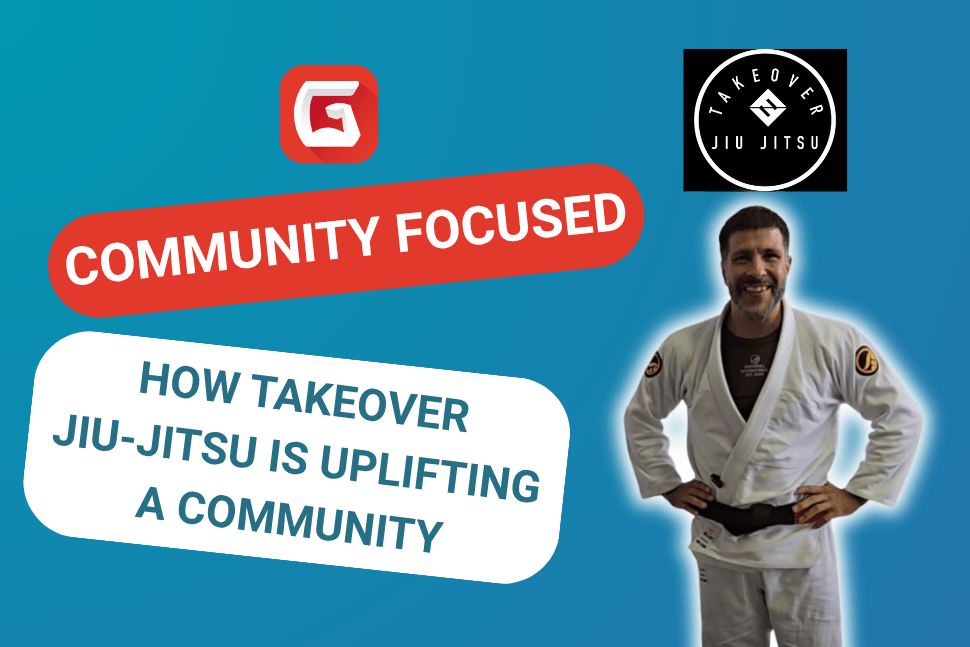As many gyms are currently shutdown due to the COVID-19 pandemic, many instructors are using this time to re-evaluate their curriculum. Much of the focus will likely be on technical instruction, but there’s another aspect that is often overlooked – warm-ups.
Warm-ups play an important role for any sports, martial arts training included. Yet it’s often boring, repetitive or missing completely. In this article I’ll go over the science behind warm-ups and its importance, the structure of a good warm-up and additional benefits you can achieve through it. By the end of the article you should be prepared to create warm-ups that are fun, engaging, efficient and help your students improve.
Why warm-ups are important
[Warm-up exercises] are essential to efficient body coordination, minimization of injuries, and top-level competitive performance.
Ishikawa T & Draeger D. – Judo Training Methods
Opinions about warm-ups are varied and divided. Some gyms spend half an hour running a conditioning work-out they call a warm-up, and some don’t run any warm-up at all.
Before we get into what good warm-ups should look like, it’s important to discuss: why do we warm-up at all? Luckily, science can help us here, and studies have shown warm-ups can offer the following benefits:
- Faster muscle contraction and relaxation
- Improvements in the rate of force development
- Improvements in reaction time
- Improvements in muscle strength and power
- Lowered viscous resistance in muscles
- Improved oxygen delivery
- Increased blood flow to active muscles
- Enhanced metabolic reactions
There is also empirical evidence warm-ups can be beneficial for injury prevention, but the actual mechanics of this are not well understood. My personal opinion is that it’s a combination of the factors above.
So how do we go about creating a warm-up that achieves those benefits?
The structure of a good warm-up
One of the most popular warm-up structures today is the RAMP method. It was created by Ian Jeffreys, a strength and conditioning coach at the University of South Wales, and consists of three phases:
- Raise
- Activate & Mobilize
- Potentiation
It’s very similar to the warm-up protocol that performance coach PJ Nestler suggests for Jiu-Jitsu athletes: Start moving, get mobile & prepare to fight.
Let’s look at all these phases separately. I will describe the role of each phase and provide suggestions on how to apply it in your sessions.
Raise
All body parameters go up in this phase. Body temperature, heart rate, respiration rate, blood flow and joint fluid viscosity. This phase is probably the easiest to accomplish. Just do 20 burpees right now and tell me that you’re not breathing heavy.
Most coaches do this by running a few laps around the mat. It does the trick. So do burpees and jumping jacks. All of them can have a place in your warm-ups, but a more time efficient option is using this part of the warm-up to develop some extra benefits for your athletes. More on that below.
A good idea for this phase would be solo drills, like hip escape variations, break falls, different crawl variations and rolls. Even very light (think 20%-30%) flow rolling could be used in this phase. This depends on the level of your students though – from experience, beginners will have a hard time lowering their intensity.
Activate & Mobilize
Now that you are literally warm (your body temperature should have risen) it’s time to activate the key muscle groups and mobilize the important joints.
One option would be to do a Yoga sequence for your specific sport, such as this Yoga for BJJ warm-up routine.
Some of the other exercises you can use for activation are hip bridges, judo push ups, neck exercises and partner rows (either by pulling yourself up on your partner’s sleeves while he stands over you, or by pulling your partner’s pant leg whilst he’s walking forward). More mobility focused exercises: shoulder circles, bodyweight squats and lunges, cat-cow’s and dynamic 90/90 hip stretches. These should all be done dynamically.
The movements in this phase overlap quite a bit. Most of them both activate and mobilize at the same time. The hip bridge for example, activates the glutes and at the same time mobilizes the hip flexor. That’s a good thing. You want your warming-up to be as efficient as possible.
A word on stretching: Static stretching can decrease performance and power output. There’s also no evidence that static stretching helps to prevent injuries. Dynamic stretching like in the activate & mobilize phase is the best option. You can find the supporting research in the footnotes.
Potentiation
Now it’s time to get even more sport specific. Now that your body is warm, active and mobilized, you can get closer to the real thing. This would be the moment to drill takedowns, passes, sweeps and submissions. This would also be the time to work in some of the speed drills discussed below.
Bonus warm-up benefits
Whenever I’m setting up the warm-up, I want to make it as efficient as possible. That means that next to warming-up my students, I want to improve some additional skills and attributes. The main areas I aim to improve during warm-ups:
- Flexibility
- Strength
- Technique
- Speed
- Team spirit
Let’s look how we can improve these areas within our RAMP-structured warm-up.
Flexibility
Applied during the mobilize phase. Spend some extra time on the dynamic stretches. Performance coach Joe DeFranco once told that jiu jitsu athletes should stretch all the muscles they can see in the mirror. Because we’re folded up so much, it’s important to counter those movements. Dynamically stretch the hip flexors, do some backbends, open up your shoulders and chest.
Strength
Joe also told me that jiu jitsu athletes should strengthen all the muscles they can’t see in the mirror. Glutes, hamstring, back. During the activation phase, put some extra focus on bridges, squat variations (pistol squats are great for this) and partner rows to work those muscle groups. Some core and neck work are also important for jiu jitsu. Plank variations and some neck exercises should do the trick.
I know that for full-time athletes, jiu jitsu class is not the time for them to work on strength, since many of them go to the gym too. For most jiu jitsu practitioners however, the jiu jitsu class is the only work-out they get. It’s important to strike a balance here. You want to improve the general physical preparedness of your class, but you don’t want to be their strength & conditioning coach.
Technique
This is where drills come in. During the raise phase solo drills can help students get a feeling for jiu jitsu movements. This is especially useful for beginners. I like to use the potentiation phase to implement technical drills. This is also the time I give my more advanced students some freedom. For example:
I’ll tell my students to drill a guard pass. I might show a simple guard pass to my white belts, but I’ll tell my students that if they have another pass they want to work on, this is the time. Same applies to sweeps, submissions and takedowns.
Speed
Applied during the potentiation phase. The students love these. There’s three kind of speed drills I use in my warm-ups:
Race to the belt
Made famous by Marcelo Garcia. Students are across the mat from each other, and in the middle of the mat there’s a belt. Whoever gets to the belt first, wins. You can have students start sitting down, lying down, facing each other or facing the walls. There’s plenty of variations. To up the ante, you can make the ‘loser’ do some push-ups or bodyweight squats.
Race to the top
Instead of being the first person to reach the belt, the goal here is to be the first person to get on top. You will lie next to each other on your backs, with your hips on the same line. Again, the variations are plentiful. Start with grabbing each other’s near side sleeve. Other possible starting grips: Pants grips, no grips, wrist grips, ankle grips. Whoever solidifies the top position, wins.
Relay race
More on this under ‘team spirit’.
Team spirit
Why not use the warm-up to build up the community within your team? There are some fun ways to improve team spirit during warm-ups. Two of my personal favorites are partner drills and relay races.
Partner drills
Partner drills like partner rows or shrimping not only build strength and technique, they also force students to work together. To bring this effect to the next level, try a relay race.
Relay race
This method was introduced to me by Bradley Hill and was probably the most fun during a warm-up I’ve ever had. Don’t use it too often as it will take the novelty out of it.
Divide your students into two equal groups – you want the groups to be relatively similar in skill and athletic ability. Now pick some partner exercises – Wheelbarrows, pant-leg rows and partner shrimps would be great options. Both groups will start a relay race across the mat and back. Every couple must do each exercise in a relay format. So, couple 1 does the wheelbarrow, when they’re back at the start, couple 2 goes. When all couples in a group have completed the first exercise, they go into the next exercise straight away. The first group that had all the couples do all the exercises, wins.
Putting it all together
If you want to tick off all the boxes in every warm-up you do, there won’t be a lot of time left for techniques and sparring. Remember that warming-ups, even though they can be useful, are just that. Warming-up for the actual training or competition. That’s why it’s important to make choices. Pick some of the methods discussed above and try to stick to the RAMP format. My warm-ups will usually take up between 10% to 20% of the class.
The warm-ups you pick will depend on how long the class lasts, the age of the students, the level of the students and the energy of the class. In general: The shorter the class, the shorter the warm-up. The younger the student’s, the more ‘fun’ the warming-up should be. The higher the level of the students, the more you can focus on technical warm-ups. The higher the energy level of the group, the tougher the warm-up can be.
Conclusion
I hope this article convinced you of the importance of warm-ups. If applied correctly, they’re useful, fun and they don’t need to be boring. There’s plenty of variations, the ones discussed in the article are just the tip of the iceberg. Stick to the RAMP format and look to create some additional benefits – The possibilities are endless.
Let us know in the comments what your warm-ups are usually like and if you got some new insights from this article!
Sources:
- Ishikawa T & Draeger D., Judo Training Methods: A Source Book. North Clarendon: Tuttle Publising 1999.
- Jeffreys, I. (2007). Warm-up revisited: The ramp method of optimizing warm-ups. Professional Strength and Conditioning. (6) 12-18.
- 4 Part Warm-up For Brazilian Jiu-Jitsu by PJ Nestler
- Cramer JT, Housh TJ, Weir JP, Johnson GO, Coburn JW, Beck TW. The acute effects of static stretching on peak torque, mean power output, electromyography, and mechanomyography. Eur J Appl Physiol. Mar; 93(5- 6):530–9 2005.
- Thacker SB, Gilchrist J, Stroup DF, Kimsey CD Jr. The impact of stretching on sports injury risk: a systematic review of the literature. Med Sci Sports Exerc. Mar;36(3):371–8 2004.
- Little T, Williams AG. Effects of differential stretching protocols during warm-ups on high-speed motor capacities in professional soccer players. J Strength Cond Res. Feb;20(1):203–7 2006.
 Gym Owner Statistics: The State of Gyms, Member Trends, and Usage Data
Gym Owner Statistics: The State of Gyms, Member Trends, and Usage Data




 EN (English)
EN (English)
 JA (日本語)
JA (日本語)